I have swapped my daily tech for some of the best tech from the 90s, and today we’re going to review these items to see just how good they really are.
MOBILE PHONES
The ’90s saw the beginning of a whole new industry, a world where we could easily be contactable by Mobile phone.
In fact, it was in 1992 when 22-Year-old Neil Papworth from here in the UK, was tasked with developing a messaging service for Vodafone and sent the first-ever SMS message.
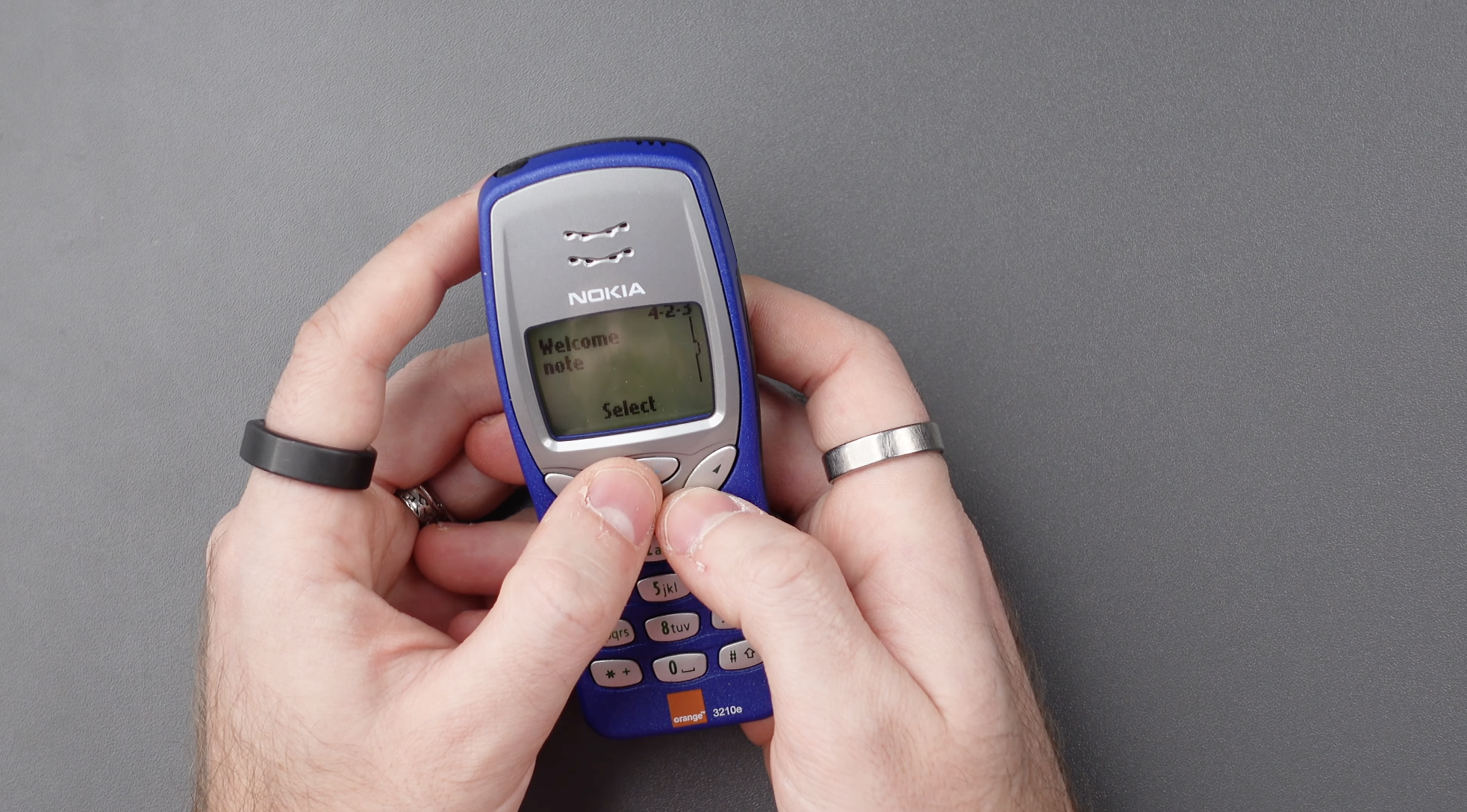
And do you know what the first ever SMS message said?
‘Merry Christmas’
So by the time the Nokia 3210 came out in 1999, most of us already knew what a smiley face emoji looked like and had already figured out how to awkwardly press buttons four times to get a single letter. And do you remember when texts cost 10p each, and you were limited to the number of characters you could send?!
I have to say that just holding one of these phones in my hands brings me back to all the nostalgia when I had one in my teenage years, riding the bus to school, texting girlfriends, and playing games.
This is where mobile gaming became a thing because, in 1997, Nokia introduced snake to the world on the 6110, and by the time it came to the 3210 and 3310 in 1999, the world was already going wild for it.
I remember sitting on the school bus, and my entire journey would be consumed by how far I could get in playing this simple game where you use the phone's keypad to go up, down, left, and right, eating pixels as you go. And for each pixel, the snake would get a pixel longer.
Repeat this until you turn into a giant winding snake and end up crashing into yourself - and off you would go again. And again. And again.
Snake was such a big hit that it was the only game that people I knew spoke about. Yes, there were other games, such as Memory and Rotation, but nobody cared for those. Snake was where it was at.
The 3210 and Nokias, in general, were also known for one other thing, though: their astonishing resiliency.
In the 90s, dropping a mobile phone was just something that happened, and you’d just pick it up and throw it back in your pocket. A far way away from today’s world of cases and screen protectors.
And if none of that brings back your childhood memories, what about ringtones? But 90’s tech wasn’t exclusively about mobile phones.
COMPUTERS
Introducing the latest in home computing - The Apple iMac G3, released in 1998; here in this Bondi Blue colour, we have a 233Mhz G3 Processor, a whopping 128Mb of Memory, and a 4GB Hard Drive.
This thing absolutely flies...yeah.
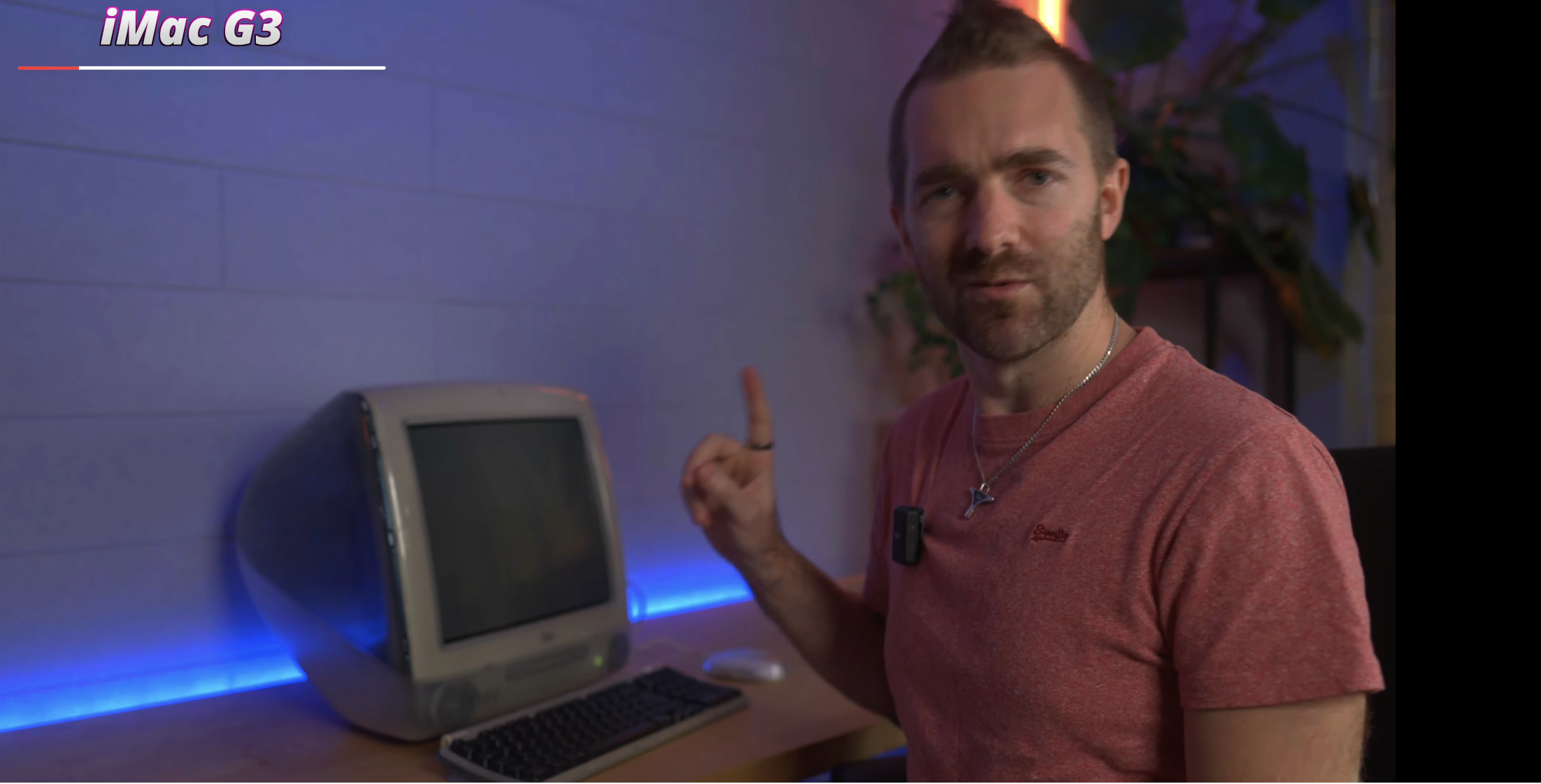
We’re running Mac OS 9.2, introduced by Apple on October 23rd, 1999, as ‘The Best Internet Operating System Ever.
And I’d love to test that out, but I can’t launch any app aside from Adobe apps.
So I guess I’m just going to use this to get a little ahead of the game by writing the script for my very first YouTube video, ready for when YouTube gets created in 6 years time, 2005 to be exact.
Oh, man! The nostalgia!
It’s crazy how much things have changed over the years.
There’s no spotlight search, which we’re all used to today, but just using this computer brings me back to the music classes I took. The days of running programs like Cubase to write music tracks and then we’d export them to Zip Disks or Mini Discs, is such a nostalgia trip for me.
I love the colourful look of the outside of the Mac; the keyboard and mouse feel really familiar in my hands, and this thing shuts down so fast, in 1, 2…. And it’s off!? Computers in this year don’t even shut down that fast; it’s crazy.
MINIDISC PLAYER
Speaking of minidisc, this is the Sony Minidisc Player. When speaking to many of my friends, they seem to skip out on this era of music which fell somewhere between the famous Sony Walkmans, the CD Walkmans, and the rise of the MP3 Player, which Apple dominated in 2001 with their iPod.
But the Minidisc format intrigued me.
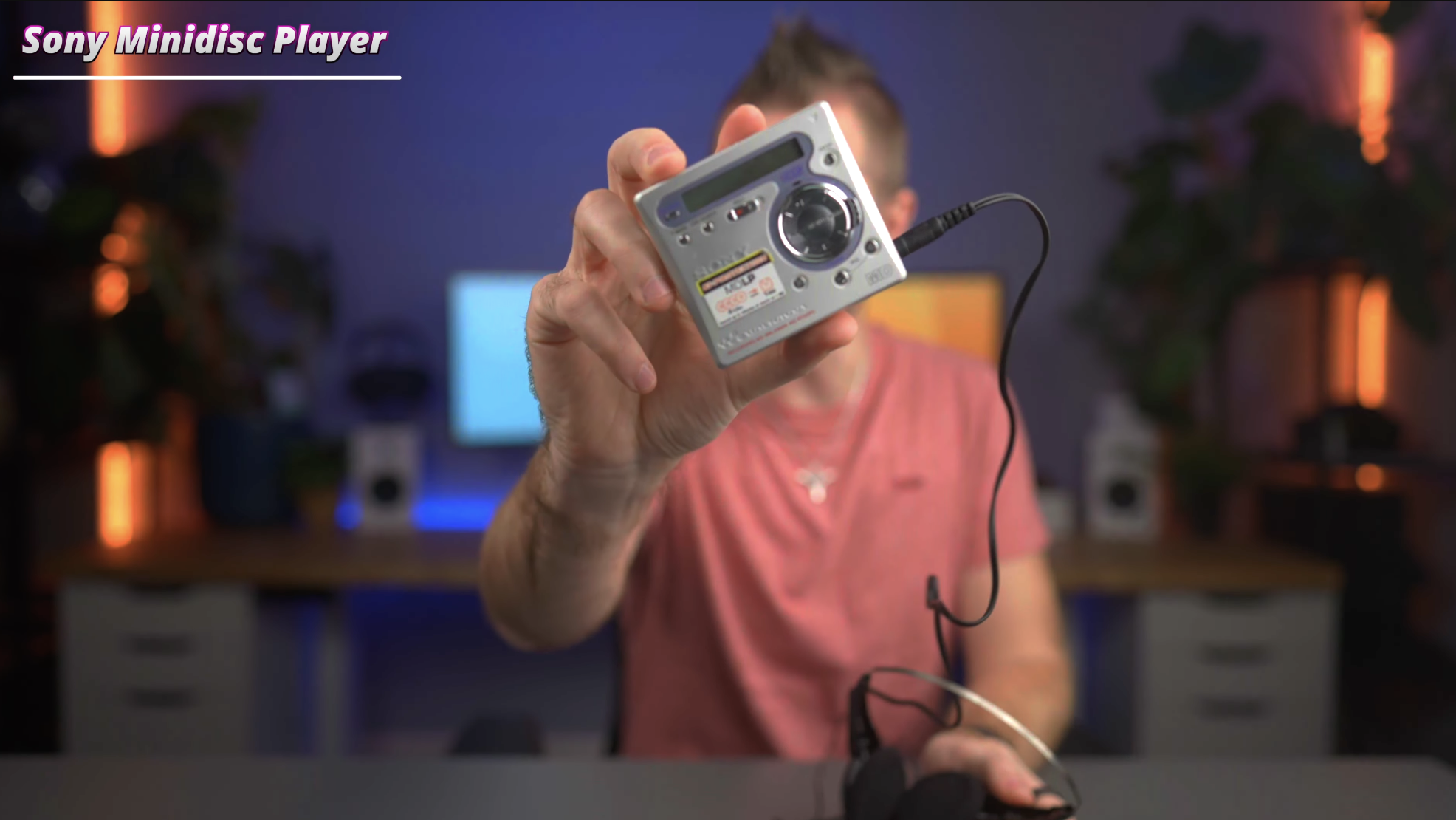
The format felt lightyears ahead of cassette tapes and CDs, and it felt cool and satisfying to have these computer-like cartridge discs that would slot into your minidisc player as you closed the door.
They allowed for listening to higher quality audio, with admittedly still not very high-quality headphones; you could also record your own music onto them multiple times, unlike the majority of CDs, which only allowed you to record once.
But minidiscs also provided one huge benefit over the older cassette tapes: the ability to record music from another device with an Optical cable.
Using an optical cable, you could record a CD to a minidisc, and it would automatically detect when the next track was playing and write that to the minidisc too.
So to record a Limp Bizkit album from 1999, you could just plug in one cable, hit record on the Minidisc player, then hit play on the CD Player, and walk away. You’d only need to remember to name all the tracks after you were done manually.
It was the rise of this format that really, to me, marked the start of portable music.
Unlike CD Players, tracks wouldn’t skip and jump as much as they would. Do you remember that? Tap or bump a CD player, making it lose its place and sometimes start the track from scratch again.
And it’s hard to put a finger on it, but carrying around the little plastic cases with all of your discs and music on them felt cool.
MP3 PLAYER
One birthday, after I’d saved up a lot of my own money, I was rewarded with an MP3 player. The Creative Labs DAP Jukebox.
This thing had a huge 20GB stored on its hard drive, which could hold over 340 hours of CD-quality music.
Yes, it was fairly big in comparison to my Minidisc player, it was about the same size as a regular portable CD player. But it could do SO much more.
I remember hooking this thing up to my computer and uploading hundreds and hundreds of music tracks, albums, rare b-sides, whatever I could find from the likes of Napster and Limewire, and essentially filled my Creative Jukebox up with all of the music which shaped my young self.
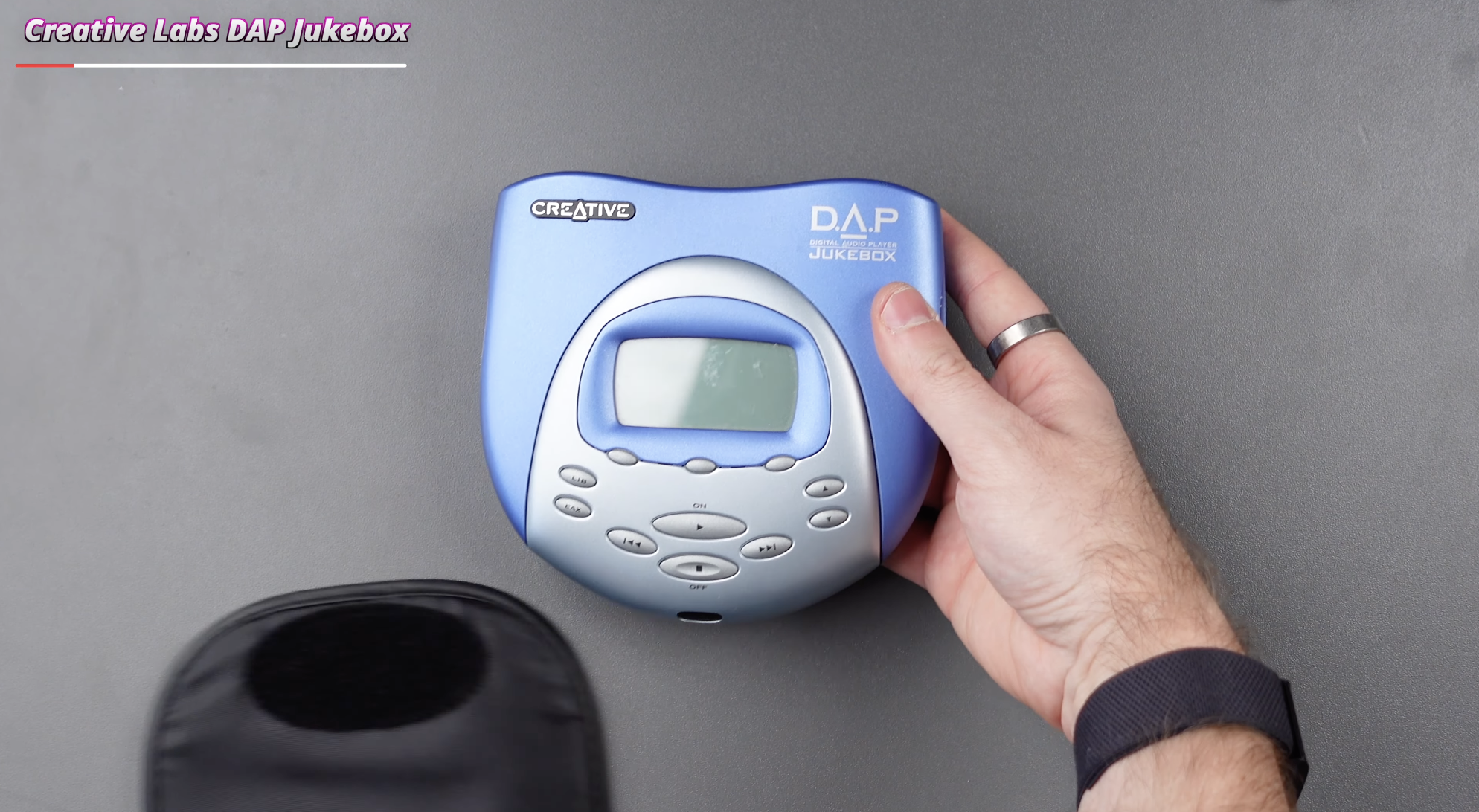
It’s unfortunate that this one I bought, well - it didn’t work. It booted up the first time I got it, and when I came to turn it on a second time, it just didn’t.
This thing meant that you no longer had to carry around a wad of CDs or Minidiscs, and no choosing which 2 or 3 you wanted to bring to school that day. Now, I could carry my entire collection on one device.
Yes, it did suffer similar issues to a CD player when it was jogged a bit too hard because of the spinning hard disk inside. Yes, the headphones we have today didn’t live up to what I wore in the 90s, but this Creative Labs DAP Jukebox is the biggest reason I didn’t jump on the hype from the Apple iPod.
Because why would I? This thing worked with my Windows PC. It had ALL of my music collection on it. It was portable, and I didn’t need anything else to replace it.
But the fun didn’t stop there. Because after school and at the end of each day, I’d come home, park myself on the nearest sofa and spend the next 8 hours playing the best of the best when it comes to gaming.
PS1 AND TV
Undoubtedly the best gaming experience came from the Playstation.
With games like Gran Turismo, a game I put countless hours and probably days and weeks into progressing through to Ridge Racer, another racing favourite of mine for different reasons. To one of my favourite beat 'em up games, which I still enjoy to this day, Tekken.
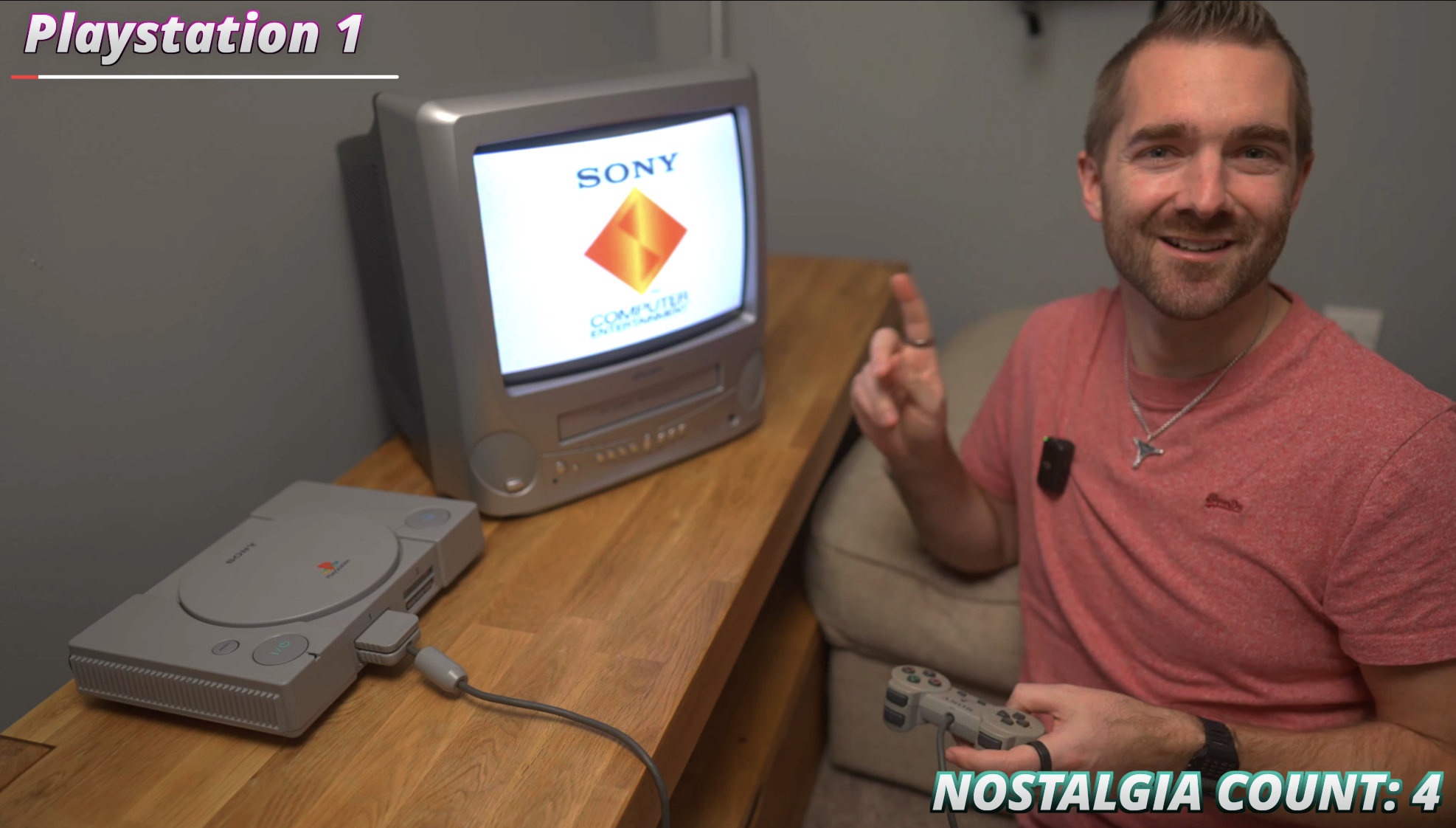
Yoshimitsu was always my favourite.
Or Jack, where you could win by just swinging your arm about each time. And for each game, your progress would be saved to a Memory Card.
Ah, I just had another flash of Nostalgia just holding this card.
The Playstation memory card holds just 128KiB of data. Over time this did become problematic, so you would end up owning multiple memory cards and swapping them out depending on the game you were playing. But you’d have to wait until the Playstation 2 came out five years later, still with memory cards, but they would be able to hold a huge 8Mb of data instead.
The controllers on the PlayStation were pretty revolutionary too.
For the first time, we had a comfortable controller to hold and could utilise more fingers by using the four shoulder buttons. Which were perfect for driving games and shooting games which we still see to this day.
Fun fact, did you know that the Japanese PlayStation controllers were actually made 10% smaller than the European and North American models? It was because the average person in Japan had smaller hands.
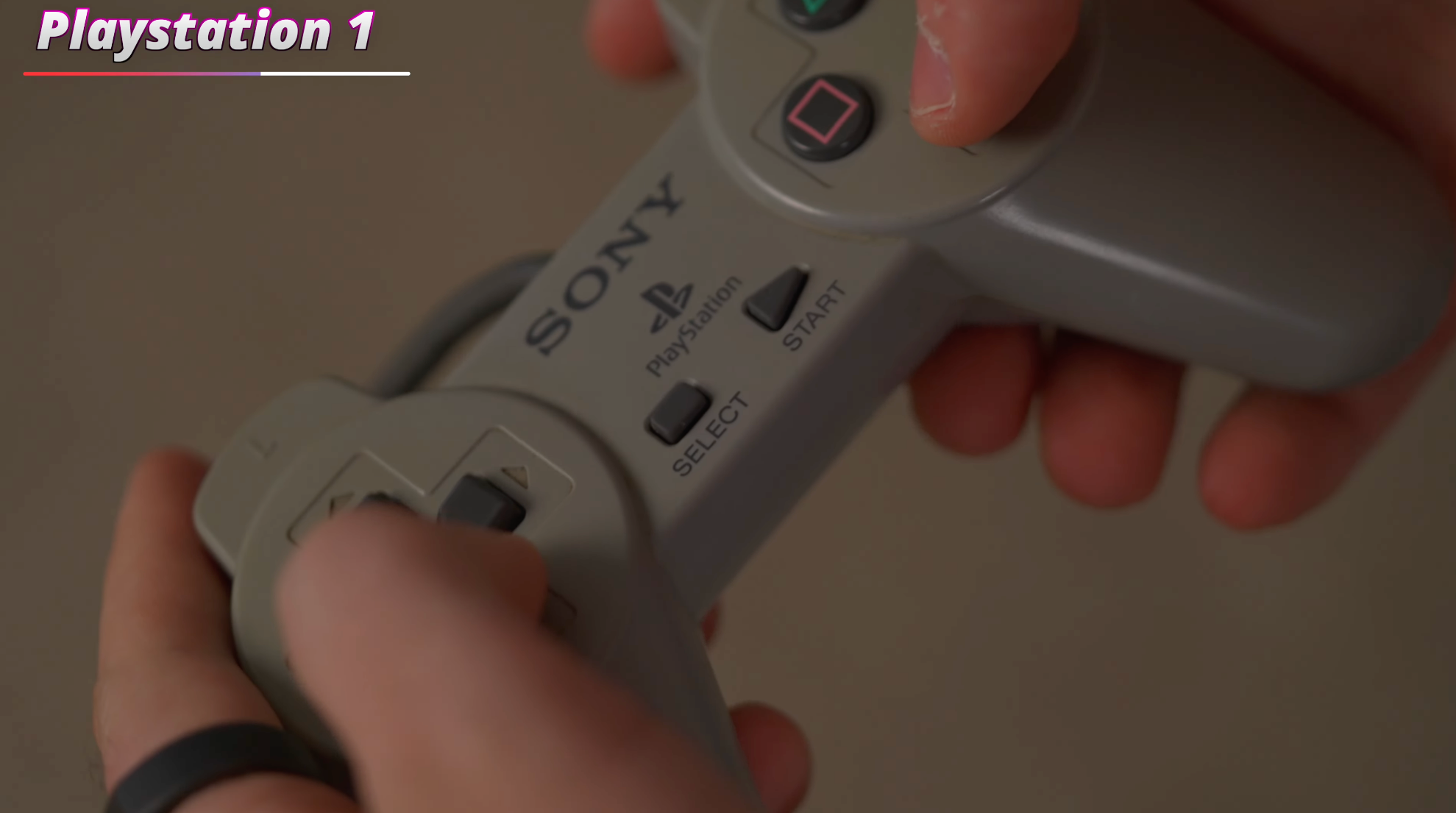
I never knew that!
The Playstation controllers were a far stretch from Nintendo’s interpretation of a comfortable controller, with their awkwardly shaped N64 controller.
I dread to think how many hours I ploughed into games on this console, and it’s crazy to see how far games have come since.
I remember saying to my friends at the time, look at these graphics! They’re amazing! Because, for the time, they were truly next-generation graphics.
I can only imagine what the future of gaming looks like to us now, and to our kids who are growing up with today's modern generation of consoles setting the standard for them, much like these consoles did for us.
Which era should I do next? Should it be the 80’s? The 2000’s? Let me know in the comments below.


